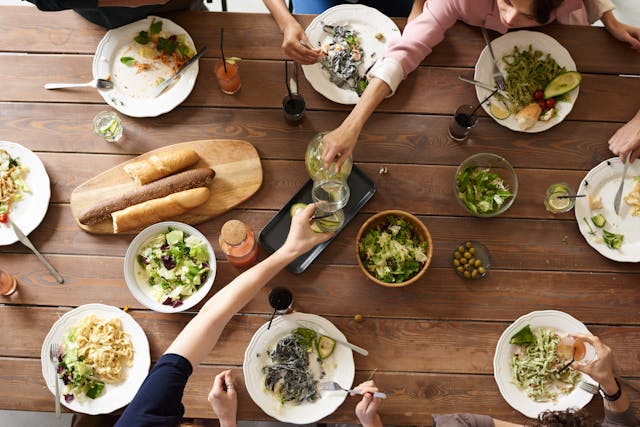Can a meal offer more than just nourishment—perhaps even peace? In a country known for its fast-paced lifestyle and 24-hour eateries, there’s a quiet movement brewing beneath the surface. All across Korea, significantly beyond the spotlight of tourist-heavy zones, slow dining spots invite people to pause, breathe, and savor. These hidden places aren’t just restaurants—they’re refuges. They remind us that food isn’t just fuel; it’s an experience, a mood, and sometimes even a therapy. With modern tools like Seoul esim, travelers can wander freely, staying connected while exploring these quiet culinary sanctuaries that offer more than just a meal—they offer stillness.

Post Contents
Teahouses That Whisper Tradition
Before espresso machines and milk frothers arrived, Korea had its way of slowing down through tea. Traditional teahouses create a different kind of dining rhythm in cities like Jeonju, Gyeongju and tucked-away corners of Seoul. You remove your shoes, step onto warm wooden floors, and are served delicate cups of omija, jujube, or green tea in silence or hushed conversation. These spaces are often centuries old or inspired by classic Hanok architecture, and they hold time still. The snacks are simple—rice cakes, dried fruit, or handmade sweets—but the attention to detail makes each bite matter.
Farm-To-Table In The Quiet Countryside
Far from city lights, Korea’s countryside offers some of the most honest meals you’ll ever experience. Local restaurants partner directly with farmers in places like Damyang, Gurye, and Yangpyeong. Seasonal ingredients are prepared with minimal intervention, letting them speak for themselves. You’ll find earthy perilla soups, wild herb pancakes, and steamed vegetables picked just hours earlier. The beauty lies in how personal everything feels. There are no loud menus or gimmicks—just quiet kitchens, wooden bowls, and a host who cares about where every leaf came from. With a Seoul esim, even these remote gems are easy to locate without disturbing their solitude.
Hanok Restaurants That Breathe Calm
Dining in a Hanok—a traditional Korean house—is an experience that naturally slows you down. Often tucked away in alleys or surrounded by small gardens, these spaces blend food with architectural grace. Restaurants in places like Bukchon Hanok Village or Andong preserve the silence and simplicity of the past. The ambiance alone shifts your mood before the meal even begins. Dishes are presented in carefully arranged bowls—each bite carrying the textures and temperatures that reflect Korea’s respect for balance. These are places where time softens and meals become quiet celebrations.
Hidden Cafés With Soulful Kitchen
Slow dining doesn’t always have to be formal. Many cafés across Korea, especially in smaller towns and art-focused districts like Tongyeong or Hongcheon, double as creative studios or libraries. Here, slow-cooked stews and handmade pastries share space with handwritten menus and vintage record players. Customers are encouraged to linger, often for hours. No one rushes you out, and Wi-Fi is offered but rarely needed. These cafés are designed to nourish more than hunger—they feed reflection, conversation, and sometimes, healing. They are the places you remember long after the latte art fades.
Vegetarian Spaces That Center Mindful Eating
Though Korean cuisine is known for its seafood and barbecue, many vegetarian and vegan restaurants are redefining what slow dining means. These aren’t trendy, high-concept places—they’re quiet, thoughtful spaces that often blend Buddhist temple food philosophy with modern tastes. Think lotus-root soup, tofu with mountain herbs, or fermented dishes that took weeks to prepare. In places like Seoul’s Insadong or Jeju’s hidden garden cafés, meals are guided by sustainability and gratitude. The pace here invites mindfulness—not just about what you’re eating but how it was made and makes you feel.
Art-Inspired Kitchens That Tell A Story
Some slow dining spots are also spaces for creativity. In regions like Gangneung or Yeongwol, small restaurants run by artists, writers, or retired chefs turn each meal into a story. They plate food like paintings, play soft jazz in the background, and serve courses with handwritten notes or poems. These places often serve only a few guests daily, changing their menus with the seasons or moods. There is no rush, no urgency—just a desire to connect through flavors and feelings. It’s a type of dining that turns strangers into familiar faces.
Final Thoughts
In Korea, slowing down isn’t always easy—but it’s possible. Away from the bright lights and quick bites, there’s a network of intimate spaces offering something we rarely find in modern travel: stillness. Whether through a teacup, a garden courtyard, or a bowl of soup made with love, these slow dining spots feed more than the body—they nourish the soul. With digital freedom from tools like Seoul esim, travelers can wander without worry, discovering quiet corners that don’t shout for attention. And in those corners, they’ll find that sometimes, the most unforgettable meals are the ones that ask nothing of you—but your presence.